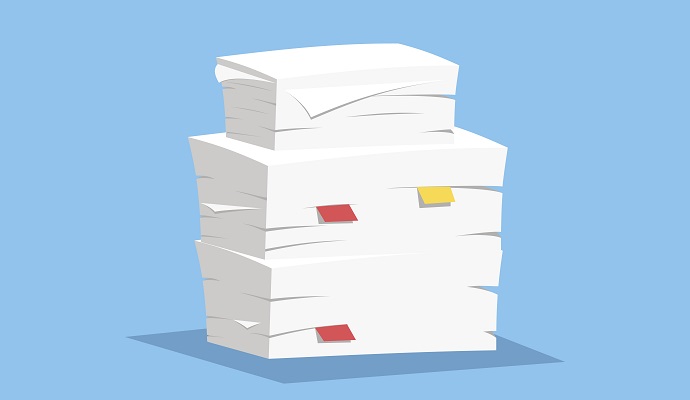90% of Providers Use Paper, Manual Process for Patient Collections
Providers still rely on paper and manual processes for patient collections despite increasing consumer demand for more convenient, electronic payment methods.

Source: Getty Images
- Ninety percent of healthcare providers still use paper and manual processes for patient collections, resulting in slower and less successful payment collection, a new survey shows.
The findings from the survey representing over 100,000 providers nationwide are included in InstaMed’s ninth annual Trends in Healthcare Payments Report. This year’s report revealed that 69 percent of providers experienced an increase in patient financial responsibility from 2017 to 2018, with the total volume of patient payments growing by 67 percent from three years prior.
With patient financial responsibility on the rise, providers are increasingly concerned about their patient collection strategies. In fact, 67 percent of providers said patient receivables was their primary revenue cycle concern in 2018.
Providers are simply not collecting full financial responsibility from patients in a timely manner, the survey revealed. Seventy-seven percent of providers reported taking over a month to collect any payment and 81 percent of providers said they cannot collect more than $1,000 in 30 days.
“As payment responsibility increases for medical bills, healthcare providers are left to collect more often from their patients and for higher amounts,” the report stated. “However, providers still rely on paper and manual processes for their patient collections. If providers were to tap into the power of the digital age, time to payment for patient collections would not only improve, but providers would also greatly improve the overall experience for their patients.”
Providers have the opportunity to significantly improve the patient experience by modernizing collection strategies and aligning payment methods with consumer demands, the report revealed.
Within the ninth annual Trends in Healthcare Payments Report, InstaMed also included the results of a consumer-facing survey, which polled thousands of patients who paid a medical bill and had health insurance in 2018. The survey showed that:
- 70 percent of consumers were confused by a medical bill in 2018
- 88 percent want a financial responsibility estimate upfront
- 81 percent demand an online estimation tool for provider visits
- 86 percent want to make all of their healthcare payments in one place
- 71 percent would enroll in eStatements from providers
- 61 percent would consider switching providers for a better healthcare payments experience
Data from InstaMed’s network also showed that online patient payments increased 121 percent from 2015 to 2018, and the total number of automatic payments through payment plans grew 362 percent during the period.
Healthcare consumers are seeking more convenient, electronic patient collection methods. However, providers are not meeting consumer demands.
In addition to paper and manual processes for patient collections, 71 percent of providers also do not offer eStatements, and 61 percent do not offer automatic payments. Over one-half of providers (53 percent) also cannot determine a patient’s financial responsibility during a visit.
Eliminating paper and manual processes is key to improving patient collections and the organization’s overall bottom line. Hospitals that provide a “superior” customer experience have net margins that are 50 percent greater than facilities with “average” customer experiences, a cited Accenture study showed.
Additionally, providers can increase consumer loyalty through an improved patient financial experience, which translates to additional revenue. A cited Advisory Board report shows a 10 percent boost in consumer loyalty can equal more than $22 million in revenue for the average hospital, the report pointed out.
Providers can realize a significant return on investment with going digital not only when it comes to patient collections, but the entire billing system as a whole, the report emphasized.
“Increases in consumer responsibility are a major trend in the healthcare industry and will shape the future of healthcare payments. However, there is one area that must change quickly, independent of consumer responsibility, and that is the heavy reliance on paper in the industry,” the report stated.
“Very few industries leverage paper and manual processes quite like healthcare does: from paper forms for patient check-in to mailed medical bills and explanations of benefits. Paper is a huge opportunity for cost savings in the industry, especially providers. Additionally, paper clogs up and adds unnecessary scope to time-sensitive and mission critical processes. The time to remove paper from the healthcare industry is now.”
